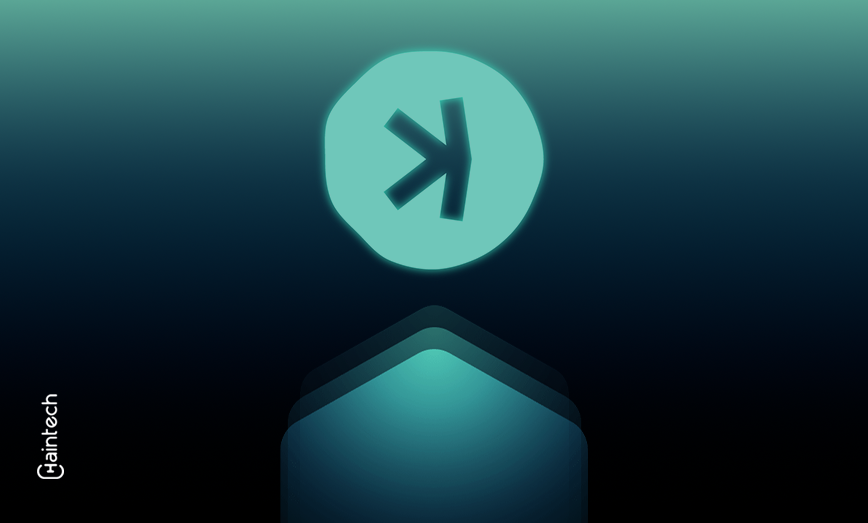What is Kaspa?

Blockchain technology has grown in the past few years. Transparency industry Research estimates that the worldwide blockchain technology industry was valued at US$315.9 million in 2015 and will reach US$20 billion by 2024. Market CAGR is expected to reach 58.90% till 2024.
However, despite their popularity, digital assets face challenges in speed, scalability, and security. To address these issues, we need transactions to be executed quickly, efficiently, and instantly.
Kaspa intends to solve these issues and become the most secure, fast, and adaptable Layer-1 PoW cryptocurrency network.
In this blog, we will explore the unique features of Kaspa, and the investment potential of KAS Coin. Let’s get started.
What is Kaspa?
Kaspa claims to be the fastest and most scalable PoW-based Level 1 instant validation transaction layer. Based on the GHOSTDAG/PHANTOM protocol, a scalable extension of Bitcoin consensus, it’s theoretically as secure as Bitcoin because it makes no extra assumptions. Unlike legacy blockchains, PHANTOM allows parallel blocks to coexist and form consensus. Kaspa is community-based and open-sourced.
Kaspa aims to fix the Bitcoin consensus’s problem of network attackers issuing slightly fewer blocks than valid work due to the frequency of isolated blocks in regressing transactions.
History of Kaspa
Aviv Zohar and Yonatan Sompolinsky founded Kaspa in 2016. They implemented GHOSTDAG to scale PoW blockchains. Like previous PoW methods, it offers safety, faster settlement, and customisable block time and reward.
Since he invented GHOSTDAG, Sompolinsky has directly influenced Ethereum’s technology. Ethereum’s whitepaper acknowledges the founder’s 2013 GHOSTDAG protocol paper.
Cryptography researcher Elichai Turkel, doctoral student Shai Wyborski, developer Ori Newman, Master of Computer Science Michael Sutton, and developer Mike Zak are the brains behind Kaspa too. These individuals helped build and maintain the Kaspa blockchain network.
How does Kaspa work?
Kaspa’s GHOSTDAG protocol distinguishes it from the blockchain. GHOSTDAG allows several blocks to coexist and be ordered, unlike standard blockchains. BlockDAGs safeguard the network and allow large block rates. It operates at one block per second and aims to achieve 10 or 100. This redefines blockchain scalability.
Kaspa’s framework is powerful and user-friendly. Reachable networks allow users to quickly investigate the BlockDAG’s structure. Kaspa optimises storage efficiency through block data trimming and block header pruning.
It uses Simple Payment Verification (SPV) proofs, a cryptographic innovation that verifies transactions without downloading the blockchain. This streamlines transaction validation, making the network more efficient and user-friendly.
It supports subnetworks, enabling layer 2 solutions. This support is essential for network growth, allowing it to accommodate more applications and scale.
A 12-note musical scale-inspired monetary policy makes Kaspa intriguing. The chromatic phase policy reduces block rewards geometrically with time, like musical notes. Starting with the initial block reward at note A4 frequency, it is half annually. This novel approach, which combines music theory and cryptographic monetary policy, shows Kaspa’s creativity.
Features of Kaspa
Instant confirmation:
It provides rapid ledger confirmation, which improves the user and developer experience, integrates with other online apps, and speeds transaction settlement. Minimising consensus engine latency ensures fast transaction confirmation.
Peripheral Nodes:
Kaspa peripheral nodes reduce frontrunning and MEV hazards. This eliminates the risk of miners and trading bots altering transactions to obtain an edge. The network’s sub-second block times provide pre-trade privacy and stealth transactions, safeguarding users against manipulation.
Fast and Scalable Transaction Sequencing:
Kaspa aims to be a fast and scalable proof-of-publication transaction sequencing engine. The fundamental consensus layer just tracks payments, while Layer Two solutions handle sophisticated processes. This method speeds settlement and cross-silo communication, solving crypto projects and user difficulties.
Security:
Using kHeavyHash instead of SHA-256 PoW encryption, Kaspa uses advanced security like Bitcoin. kHeavyHash has all the security of SHA-256 plus a weighting function. Mining and signing transactions via a decentralised network of miners keeps the blockDAG secure, decentralised, and permissionless.
BlockDAG:
Kaspa is the first cryptocurrency to use a BlockDAG instead of a blockchain. A BlockDAG is a more complicated structure with vertices representing blocks and edges representing child/parent links than a linear blockchain. This novel solution gives Kaspa next-generation scalability, high transactional bandwidth, and rapid confirmations while maintaining decentralisation.
Pros and Cons of Kaspa (KAS)
Pros
Process transactions efficiently:
Kaspa’s BlockDAG technology speeds up transaction processing. BlockDAG processes many transactions simultaneously, boosting transaction throughput compared to typical blockchains.
Quicker Confirmations:
BlockDAG speeds up transaction confirmation. Kaspa’s innovative mining algorithm, GHOSTDAG, compensates miners for producing blocks with more network connectivity, not merely the longest chain.
Open-Source Project:
Kaspa is open-source, so anyone can improve it. Developers worldwide may improve the network in this collaborative environment.
Community Engagement:
Education and community involvement are priorities at Kaspa. Regular meetups and hackathons foster community collaboration, innovation, and engagement.
Cons
Lack of Adoption:
Kaspa, a new cryptocurrency, struggles to acquire adoption. Kaspa may struggle to create a large cryptocurrency market presence because of its unfamiliarity among investors and users.
Highly Competitive Market:
The cryptocurrency market is highly competitive, with many established enterprises. To attract users and investors, Kaspa must offer unique features and considerable advantages.
Is Kaspa safe?
Cryptographic values are volatile and risky. High price swings are more common for low-market-cap currencies like KAS. Thus, conduct your study and only invest what you can afford to lose due to crypto’s volatility. While the future is uncertain, some analysts predict it will flourish and become the most trustworthy crypto PoW technology.
Conclusion
Kaspa’s blockchain technology is unique in a world of speed, security, and scalability. Its revolutionary GHOSTDAG protocol, community-driven culture, and visionary leader, Yonatan Sompolinsky, make it a prospective crypto player.
BlockDAG technology helps Kaspa process transactions swiftly. It appeals to miners, dealers, and developers that want a secure, decentralised network without losing performance.
Fast transactions are making Kaspa stand out from traditional blockchains. Its concentration on speed and decentralisation makes it a strong contender in a fast-paced market. Kaspa’s progress towards speedier processing, new exchange listings, and user-friendly wallets bodes well.
Kaspa’s commitment to progress suggests it might become a major cryptocurrency player. Smart contracts, DeFi apps, and widespread adoption might make Kaspa a major player in the coming years. Happy trading!









